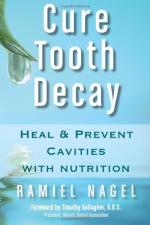|
This section contains 1,932 words (approx. 7 pages at 300 words per page) |

|
Tooth decay, which is also called dental cavities or dental caries, is the destruction of the outer surface (enamel) of a tooth. Decay results from the action of bacteria that live in plaque, which is a sticky, whitish film formed by a protein in saliva (mucin) and sugary substances in the mouth. The plaque bacteria sticking to tooth enamel use the sugar and starch from food particles in the mouth to produce acid.
Tooth decay is a common health problem, second in prevalence only to the common cold. It has been estimated that 90% of people in the United States have at least one cavity and that 75% of people had their first cavity by the age of 5. Although anyone can have a problem with tooth decay, children and senior citizens are the two groups at highest risk. Other high-risk groups include people who eat a lot of...
|
This section contains 1,932 words (approx. 7 pages at 300 words per page) |

|


